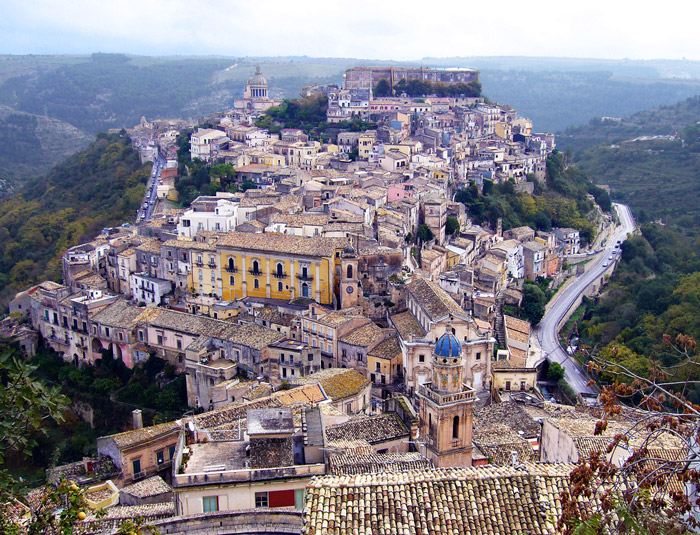Ragusa Ibla
Nov 16, 2012
 More than four millennia ago, people who called themselves Sicels built a town atop this hill, 300 meters above small streams in the steep-sided limestone valleys of southern Sicily.
More than four millennia ago, people who called themselves Sicels built a town atop this hill, 300 meters above small streams in the steep-sided limestone valleys of southern Sicily.
Then came the Greeks and briefly the Carthaginians, then the Romans, the Byzantines, the Arabs, and finally, in the eleventh century, the Normans. The town had its name by then, Ragusa. As part of the Kingdom of Sicily, it slipped out from under control of the Norman duke Geoffrey and became a fief of the Chiaramontes, the most powerful family in Sicily.
At first glance, Ragusa's many centuries, particularly its medieval times, appear plain in the architecture and plan of the town clinging to the hill. But that's an illusion; almost everything here postdates a severe earthquake in 1692, which killed thousands of people and destroyed almost all the buildings, including a very large Gothic cathedral.
What we see today is Ragusa rebuilt, in the early eighteenth century, in the style known as Sicilian baroque. We also see Ragusa stratified; the rich people moved over to the next hill to rebuild their homes and churches–Ragusa Superiore–while the poor stayed where they were, rebuilding in the rubble– Ragusa Inferiore, known today as Ragusa Ibra.
Of the two Ragusas–essentially identical in age and architectural style–the poor folks' town, featured in this photo, attracts more attention from twenty-first-century tourists and is generally considered the more picturesque. The replacement for the ruined cathedral, however, is in Ragusa Superiore.
As an American, I have my doubts about places that look like this; I sniff Walt Disney and/or Hollywood and/or Colonial Williamsburg in the so-called Sicilian air. I fear this is a town populated by characters in costume whose main role in life is to get me to part with my money. But you know what? I'll take the risk. And if I ever get to Sicily . . . I can't promise I'll come back.